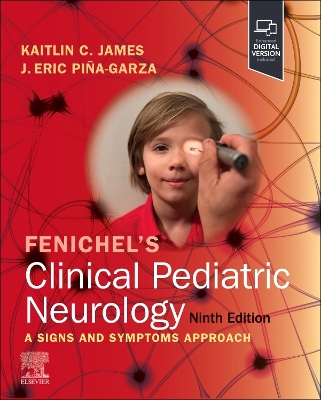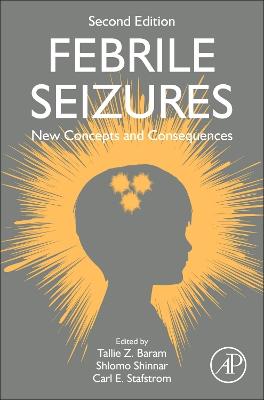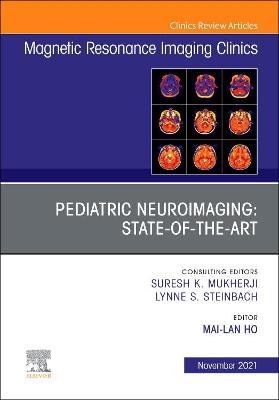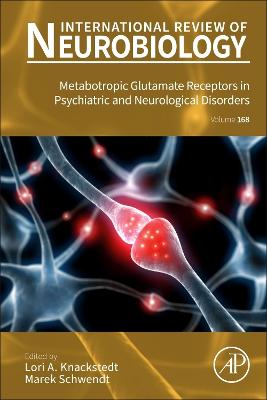Pediatric Epilepsy Surgery Techniques
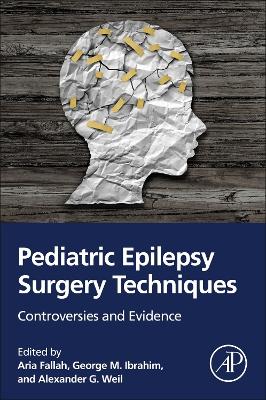 -10%
portes grátis
-10%
portes grátis
Pediatric Epilepsy Surgery Techniques
Controversies and Evidence
Fallah, Aria; Ibrahim, George M.; Weil, Alexander G.
Elsevier Science & Technology
11/2024
396
Mole
Inglês
9780323959810
15 a 20 dias
Descrição não disponível.
Part 1: Evidence in pediatric epilepsy surgery
1. Evidence in pediatric epilepsy surgery
Churl-Su Kwon and Varun Ramanan Subramaniam
2. Controversies in the timing of pediatric epilepsy surgery-is earlier better?
Jarod L. Roland
Part 2: Invasive investigation
3. Electroencephalographic evaluation of epileptogenicity-traditional versus novel biomarkers to guide surgery
Eroshini Swarnalingam and Julia Jacobs
4. Invasive monitoring: stereoelectroencephalography (sEEG) versus subdural electrode (SDE) versus hybrid evaluation
Taylor J. Abel, Luis Fernandez and Joseph Garcia
Part 3: Resective or ablative surgery
5. Intraoperative adjuncts to optimize the surgical treatment of drug-resistant epilepsy-do new tools improve outcome?
Trang Tran, Frederic Leblond and Roy W.R. Dudley
6. Medial temporal lobe epilepsy-selective amygdalohippocampectomy versus anterior temporal lobectomy
Christian Dorfer
7. Epilepsy in eloquent cortex: resection versus responsive neurostimulation
Saadi Ghatan
8. Lesional epilepsy: lesionectomy versus ECoG-guided resection
Shimrit Sibony-Uliel and Jonathan Roth
9. Insular/perisylvian epilepsy: Open resection versus stereotactic ablation (MR-guided laser ablation/radiofrequency thermocoagulation) versus responsive neurostimulation
Vincent Joris, Jessica Royer and Alexander G. Weil
Part 4: Hypothalamic hamartoma
10. Hypothalamic hamartoma-open surgery versus endoscopic surgery versus stereotactic radiosurgery versus stereotactic ablation (MR-guided laser ablation/Radiofrequency ablation) versus MRFUS
Santiago Candela-Canto, Roberto Martinez Alvarez and Jose Hinojosa Mena-Bernal
Part 5: Tuberous sclerosis complex
11. Resective surgery in tuberous sclerosis complex-related epilepsy: tuberectomy and tuberectomy plus
Shuli Liang, Zhirong Wei, Jiaqi Wang and Feng Zhai
Part 6: Disconnective procedures
12. Functional hemispheric surgery-vertical versus lateral approach
Jia-Shu Chen, H. Westley Phillips and Aria Fallah
13. Minimally invasive hemispherotomy-endoscopic, radiofrequency and robotic techniques
Poodipedi Sarat Chandra and Manjari Tripathi
14. Lobar/multilobar epilepsy: resection versus disconnection
Vejay N. Vakharia and Martin M. Tisdall
15. Corpus callosotomy: anterior two-thirds (two-stage) versus complete (one-stage)
Meena Vessell and Robert J. Bollo
Part 7: Neuromodulation
16. Temporal lobe epilepsy with preserved function: multiple hippocampal transection versus neuromodulation (deep brain stimulation, responsive neurostimulation)
Logan Massman and Sean Lew
17. Neuromodulation: comparison of vagus nerve stimulation, deep brain stimulation, and responsive eurostimulation
Nebras M. Warsi, Hrishikesh Suresh and George M. Ibrahim
1. Evidence in pediatric epilepsy surgery
Churl-Su Kwon and Varun Ramanan Subramaniam
2. Controversies in the timing of pediatric epilepsy surgery-is earlier better?
Jarod L. Roland
Part 2: Invasive investigation
3. Electroencephalographic evaluation of epileptogenicity-traditional versus novel biomarkers to guide surgery
Eroshini Swarnalingam and Julia Jacobs
4. Invasive monitoring: stereoelectroencephalography (sEEG) versus subdural electrode (SDE) versus hybrid evaluation
Taylor J. Abel, Luis Fernandez and Joseph Garcia
Part 3: Resective or ablative surgery
5. Intraoperative adjuncts to optimize the surgical treatment of drug-resistant epilepsy-do new tools improve outcome?
Trang Tran, Frederic Leblond and Roy W.R. Dudley
6. Medial temporal lobe epilepsy-selective amygdalohippocampectomy versus anterior temporal lobectomy
Christian Dorfer
7. Epilepsy in eloquent cortex: resection versus responsive neurostimulation
Saadi Ghatan
8. Lesional epilepsy: lesionectomy versus ECoG-guided resection
Shimrit Sibony-Uliel and Jonathan Roth
9. Insular/perisylvian epilepsy: Open resection versus stereotactic ablation (MR-guided laser ablation/radiofrequency thermocoagulation) versus responsive neurostimulation
Vincent Joris, Jessica Royer and Alexander G. Weil
Part 4: Hypothalamic hamartoma
10. Hypothalamic hamartoma-open surgery versus endoscopic surgery versus stereotactic radiosurgery versus stereotactic ablation (MR-guided laser ablation/Radiofrequency ablation) versus MRFUS
Santiago Candela-Canto, Roberto Martinez Alvarez and Jose Hinojosa Mena-Bernal
Part 5: Tuberous sclerosis complex
11. Resective surgery in tuberous sclerosis complex-related epilepsy: tuberectomy and tuberectomy plus
Shuli Liang, Zhirong Wei, Jiaqi Wang and Feng Zhai
Part 6: Disconnective procedures
12. Functional hemispheric surgery-vertical versus lateral approach
Jia-Shu Chen, H. Westley Phillips and Aria Fallah
13. Minimally invasive hemispherotomy-endoscopic, radiofrequency and robotic techniques
Poodipedi Sarat Chandra and Manjari Tripathi
14. Lobar/multilobar epilepsy: resection versus disconnection
Vejay N. Vakharia and Martin M. Tisdall
15. Corpus callosotomy: anterior two-thirds (two-stage) versus complete (one-stage)
Meena Vessell and Robert J. Bollo
Part 7: Neuromodulation
16. Temporal lobe epilepsy with preserved function: multiple hippocampal transection versus neuromodulation (deep brain stimulation, responsive neurostimulation)
Logan Massman and Sean Lew
17. Neuromodulation: comparison of vagus nerve stimulation, deep brain stimulation, and responsive eurostimulation
Nebras M. Warsi, Hrishikesh Suresh and George M. Ibrahim
Este título pertence ao(s) assunto(s) indicados(s). Para ver outros títulos clique no assunto desejado.
Ablation; Adjunct; Anterior temporal lobectomy; Atonic seizures; Callosotomy; Childhood; Cognition; Corpus callosotomy; Cortical dysplasia; DBS; Deep brain stimulation (DBS); Development; Disconnection; Disconnection syndrome; Drug resistant epilepsy; Drug-resistant epilepsy; ECoG; Early intervention; Electrocorticography; Electroencephalogram; Electrophysiology; Endoscopic hemispherotomy; Endoscopic surgery; Epilepsy; Epilepsy surgery; Epileptogenic zone; Epileptogenicity index; Extent of resection; Functional hemispherotomy; Gelastic seizures; Hemispherectomy; Hemispheric surgery; High-frequency oscillations; Hippocampus; Hypothalamic hamartoma; Infancy; Infra-slow activity; Insula; Intraoperative; Invasive EEG; Language; Laser ablation; Lateral periinsular; Lateral transsylvian; Lesionectomy; Lobectomy; MR-guided focus ultrasound; MR-guided laser ablation; MR-guided laser interstitial thermal therapy; Magnetic resonance imaging; Medically refractory epilepsy; Memory; Minimally invasive; Modulatory; Multilobar epilepsy; Multiple hippocampal transection (MHT); Neuromodulation; Neuronavigation; Neuropsychological outcome; Neurosurgery; Opercula; Outcomes; Pediatric epilepsy; Pediatric epilepsy surgery; RNS; ROTCH; Radio frequeny thermocoagulation; Radiofrequency thermocoagulation; Raman spectroscopy; Resection; Resective surger; Responsive neurostimulation; Responsive neurostimulation (RNS); Robotic surgery; Rolandic; Seizure; Seizure freedom; Seizures; Selective amygdalohippocampectomy; Stereo EEG; Stereotactic ablation; Stereotactic radiosurgery; Stereotaxy; Surgical disconnection; Sylvian fissure; TSC; Temporal lobe epilepsy; Temporal plus epilepsy; Tuberectomy; Tuberectomy plus; Tumor; VNS; Vertical parasagittal; Visual
Part 1: Evidence in pediatric epilepsy surgery
1. Evidence in pediatric epilepsy surgery
Churl-Su Kwon and Varun Ramanan Subramaniam
2. Controversies in the timing of pediatric epilepsy surgery-is earlier better?
Jarod L. Roland
Part 2: Invasive investigation
3. Electroencephalographic evaluation of epileptogenicity-traditional versus novel biomarkers to guide surgery
Eroshini Swarnalingam and Julia Jacobs
4. Invasive monitoring: stereoelectroencephalography (sEEG) versus subdural electrode (SDE) versus hybrid evaluation
Taylor J. Abel, Luis Fernandez and Joseph Garcia
Part 3: Resective or ablative surgery
5. Intraoperative adjuncts to optimize the surgical treatment of drug-resistant epilepsy-do new tools improve outcome?
Trang Tran, Frederic Leblond and Roy W.R. Dudley
6. Medial temporal lobe epilepsy-selective amygdalohippocampectomy versus anterior temporal lobectomy
Christian Dorfer
7. Epilepsy in eloquent cortex: resection versus responsive neurostimulation
Saadi Ghatan
8. Lesional epilepsy: lesionectomy versus ECoG-guided resection
Shimrit Sibony-Uliel and Jonathan Roth
9. Insular/perisylvian epilepsy: Open resection versus stereotactic ablation (MR-guided laser ablation/radiofrequency thermocoagulation) versus responsive neurostimulation
Vincent Joris, Jessica Royer and Alexander G. Weil
Part 4: Hypothalamic hamartoma
10. Hypothalamic hamartoma-open surgery versus endoscopic surgery versus stereotactic radiosurgery versus stereotactic ablation (MR-guided laser ablation/Radiofrequency ablation) versus MRFUS
Santiago Candela-Canto, Roberto Martinez Alvarez and Jose Hinojosa Mena-Bernal
Part 5: Tuberous sclerosis complex
11. Resective surgery in tuberous sclerosis complex-related epilepsy: tuberectomy and tuberectomy plus
Shuli Liang, Zhirong Wei, Jiaqi Wang and Feng Zhai
Part 6: Disconnective procedures
12. Functional hemispheric surgery-vertical versus lateral approach
Jia-Shu Chen, H. Westley Phillips and Aria Fallah
13. Minimally invasive hemispherotomy-endoscopic, radiofrequency and robotic techniques
Poodipedi Sarat Chandra and Manjari Tripathi
14. Lobar/multilobar epilepsy: resection versus disconnection
Vejay N. Vakharia and Martin M. Tisdall
15. Corpus callosotomy: anterior two-thirds (two-stage) versus complete (one-stage)
Meena Vessell and Robert J. Bollo
Part 7: Neuromodulation
16. Temporal lobe epilepsy with preserved function: multiple hippocampal transection versus neuromodulation (deep brain stimulation, responsive neurostimulation)
Logan Massman and Sean Lew
17. Neuromodulation: comparison of vagus nerve stimulation, deep brain stimulation, and responsive eurostimulation
Nebras M. Warsi, Hrishikesh Suresh and George M. Ibrahim
1. Evidence in pediatric epilepsy surgery
Churl-Su Kwon and Varun Ramanan Subramaniam
2. Controversies in the timing of pediatric epilepsy surgery-is earlier better?
Jarod L. Roland
Part 2: Invasive investigation
3. Electroencephalographic evaluation of epileptogenicity-traditional versus novel biomarkers to guide surgery
Eroshini Swarnalingam and Julia Jacobs
4. Invasive monitoring: stereoelectroencephalography (sEEG) versus subdural electrode (SDE) versus hybrid evaluation
Taylor J. Abel, Luis Fernandez and Joseph Garcia
Part 3: Resective or ablative surgery
5. Intraoperative adjuncts to optimize the surgical treatment of drug-resistant epilepsy-do new tools improve outcome?
Trang Tran, Frederic Leblond and Roy W.R. Dudley
6. Medial temporal lobe epilepsy-selective amygdalohippocampectomy versus anterior temporal lobectomy
Christian Dorfer
7. Epilepsy in eloquent cortex: resection versus responsive neurostimulation
Saadi Ghatan
8. Lesional epilepsy: lesionectomy versus ECoG-guided resection
Shimrit Sibony-Uliel and Jonathan Roth
9. Insular/perisylvian epilepsy: Open resection versus stereotactic ablation (MR-guided laser ablation/radiofrequency thermocoagulation) versus responsive neurostimulation
Vincent Joris, Jessica Royer and Alexander G. Weil
Part 4: Hypothalamic hamartoma
10. Hypothalamic hamartoma-open surgery versus endoscopic surgery versus stereotactic radiosurgery versus stereotactic ablation (MR-guided laser ablation/Radiofrequency ablation) versus MRFUS
Santiago Candela-Canto, Roberto Martinez Alvarez and Jose Hinojosa Mena-Bernal
Part 5: Tuberous sclerosis complex
11. Resective surgery in tuberous sclerosis complex-related epilepsy: tuberectomy and tuberectomy plus
Shuli Liang, Zhirong Wei, Jiaqi Wang and Feng Zhai
Part 6: Disconnective procedures
12. Functional hemispheric surgery-vertical versus lateral approach
Jia-Shu Chen, H. Westley Phillips and Aria Fallah
13. Minimally invasive hemispherotomy-endoscopic, radiofrequency and robotic techniques
Poodipedi Sarat Chandra and Manjari Tripathi
14. Lobar/multilobar epilepsy: resection versus disconnection
Vejay N. Vakharia and Martin M. Tisdall
15. Corpus callosotomy: anterior two-thirds (two-stage) versus complete (one-stage)
Meena Vessell and Robert J. Bollo
Part 7: Neuromodulation
16. Temporal lobe epilepsy with preserved function: multiple hippocampal transection versus neuromodulation (deep brain stimulation, responsive neurostimulation)
Logan Massman and Sean Lew
17. Neuromodulation: comparison of vagus nerve stimulation, deep brain stimulation, and responsive eurostimulation
Nebras M. Warsi, Hrishikesh Suresh and George M. Ibrahim
Este título pertence ao(s) assunto(s) indicados(s). Para ver outros títulos clique no assunto desejado.
Ablation; Adjunct; Anterior temporal lobectomy; Atonic seizures; Callosotomy; Childhood; Cognition; Corpus callosotomy; Cortical dysplasia; DBS; Deep brain stimulation (DBS); Development; Disconnection; Disconnection syndrome; Drug resistant epilepsy; Drug-resistant epilepsy; ECoG; Early intervention; Electrocorticography; Electroencephalogram; Electrophysiology; Endoscopic hemispherotomy; Endoscopic surgery; Epilepsy; Epilepsy surgery; Epileptogenic zone; Epileptogenicity index; Extent of resection; Functional hemispherotomy; Gelastic seizures; Hemispherectomy; Hemispheric surgery; High-frequency oscillations; Hippocampus; Hypothalamic hamartoma; Infancy; Infra-slow activity; Insula; Intraoperative; Invasive EEG; Language; Laser ablation; Lateral periinsular; Lateral transsylvian; Lesionectomy; Lobectomy; MR-guided focus ultrasound; MR-guided laser ablation; MR-guided laser interstitial thermal therapy; Magnetic resonance imaging; Medically refractory epilepsy; Memory; Minimally invasive; Modulatory; Multilobar epilepsy; Multiple hippocampal transection (MHT); Neuromodulation; Neuronavigation; Neuropsychological outcome; Neurosurgery; Opercula; Outcomes; Pediatric epilepsy; Pediatric epilepsy surgery; RNS; ROTCH; Radio frequeny thermocoagulation; Radiofrequency thermocoagulation; Raman spectroscopy; Resection; Resective surger; Responsive neurostimulation; Responsive neurostimulation (RNS); Robotic surgery; Rolandic; Seizure; Seizure freedom; Seizures; Selective amygdalohippocampectomy; Stereo EEG; Stereotactic ablation; Stereotactic radiosurgery; Stereotaxy; Surgical disconnection; Sylvian fissure; TSC; Temporal lobe epilepsy; Temporal plus epilepsy; Tuberectomy; Tuberectomy plus; Tumor; VNS; Vertical parasagittal; Visual


